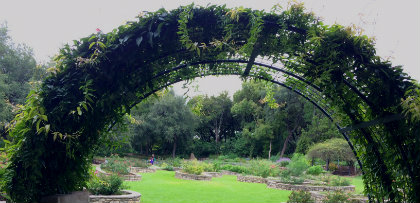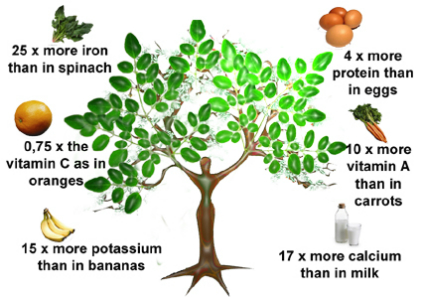
bringing nature, nurseries and gardeners together March 14, 2019
|
|
Nursery notes: as spring arrives, so do lots of fun events for gardeners of the Austin area. Some highlights:
Trowel & Error: join the gathering of gardeners on Satur-day, April 6 from 9:30 - 1 p.m.. Talks by Jeannie Ferrier (Austin Pond Society), Colleen Dieter (Red Wheelbarrow Landscapes) and Joseph Baiocchi (Austin Rose Society). Mayfield Park (3505 W. 35th Street). Free. ❦

Spring Native Plant Sale: April 13. 9 - 5 p.m. This is the Wildflower Center's huge annual event. Choose from hund-reds of species of Texas natives: seeds, annual wildflowers, grasses, perennials, wetland plants, shrubs and trees. (Bring your own cart.) Wildflower Center ❦
The Basics of Bonzai: a gentle intro to this beautiful Japan-ese artform by Elaine White at the Austin Garden Club's March meeting:7:30 p.m., March 28 Zilker Park auditorium. Austin Garden Club Free.❦
Wimberley Gardens: happy birthday to this one-year-old. 'Old Thymer' Russ reports they had a fine celebration last weekend. Current sales: snapdragons & pansies: $1 for 6-pack (reg $4.49). Three bags of mulch: $10. Tomatoes, peppers: $2 each. Hibiscus, bougainvilleas $20. Antique roses: $22. Wimberley Gardens ❦
 Arbors for all: whether framing a gate or a pathway, having this structure 'can take your garden from meh to magnificent,' writes Leanne Potts. Learn all about arched, moon gate, grape and gabled arbors, and connect with this ancient garden practice. Gardenista ❦ Arbors for all: whether framing a gate or a pathway, having this structure 'can take your garden from meh to magnificent,' writes Leanne Potts. Learn all about arched, moon gate, grape and gabled arbors, and connect with this ancient garden practice. Gardenista ❦
Buzzworthy bungalows: North America has some 4,000+ species of native bees pollinating 75% of our fruits vege-tables, writes Darby Kendall. We can help them (and have fun) by creating simple little 'Airbn-bees' for these hugely important solitary insects. Edible Austin ❦

Succulent Native: congrats to Shannon Donaldson on open-ing her second 'petite boutique' in Austin. The latest - at 5501 North Lamar (near BookWoman) - is charming and spacious, and shoppers can make their own arrangements of cacti and succulents, or buy one created by the staff. Official Grand Opening: March 30, noon - 6 p.m. Free drinks and snacks. A free plant with each purchase. Succulent Native ❦
The Austin Garden is sponsored by Hays Free Press 
Central Texas Gardener: succulent design tips from Monique Capanelli, and a visit to the gardens of a couple who 'unite, romance and hardcore practicality' in their landscape. Saturday at 4 p.m. Sunday 9 a.m. KLRU ❦

The Magnificent Moringa
by David Sargert
A few years ago, while doing some research for our new medicinal / healing garden, my wife shared an article with me on the Moringa tree, and the more I read, the more fascinated I became.
First of all, the Moringa, also known as the Drumstick Tree, is nearly entirely edible. It can grow with little water, has multiple times the amount of nutrients as oranges, carrots and milk, and grows very well in regions of malnutrition. Could this impressive tree, Moringa oleifra, solve the world's food crisis? Many are convinced it will.
The Moringa is a distant relative of cabbage and papaya. Its roots taste so much like its cousin horseradish, that some-times people called it the horseradish tree.
The fruit, a popular Indian vegetable, looks like a cross between an okra and a pole bean, and has the flavor of asparagus. The tree's cooked flowers mimic mushrooms in taste, while the leaves hint at spinach and lettuce. Its immature seeds are used like peas, and if you fry them when mature, they resemble peanuts.
In fact, it is hard to find a part of the Moringa tree that inedible. Even the bark is sometimes taken internally for diarrhea. Locals consider it a living pharmacy.
The Moringa has proven to be a multi-purpose arsenal that dispenses some of the best secrets nature has to offer. For centuries it has been used in ancient Indian Ayurvedic herbalism to treat a host of ailments such as anemia, bron-chitis, tumors, scurvy, and skin infections.
Drought hardy and disease resistant, the Moringa Tree is a godsend during the dry season, when little food is available. The leaves offer a spectrum of nutrition, rich in vitamins A, B, and C, as well as protein, calcium, and iron.
They are so nutritious, in fact, that they contain more vitamin A than carrots, more vitamin C than oranges, more calcium than milk, more iron than spinach, more potassium than bananas, and more protein than either milk or eggs! A trad-itional item in pickles and curries, the raw leaves are also perfect for salads.
Like the leaves, the flowers too are edible when cooked, packed with calcium and potassium. As a bonus, they are incredibly fragrant, and help support native bee populations.
The 'drumsticks' contain the nine essential amino acids that humans must obtain exclusively from their diet. Hidden within the drumsticks are even more remarkable seeds. Loaded with protein, they also contain special non-toxic polypeptides that act as natural Brita filters.
When ground into powder and mixed with water, they cause sediments to clump together and settle out. When strained through a cloth, they provide cheap access to clean water. Amazingly, just two seeds are enough to purify a liter of dirty water.
In turn, the seeds themselves yield valuable yellow oil called ben oil. Sweet, clear, and odorless, it doesn’t spoil easily - perfect for perfumes, cosmetics, and lubrication. It's also used for cooking due to its high levels of healthy unsaturated fats.
In one serving of Moringa leaves, you can find: 22% daily value of vitamin C, 41% daily value of potassium, 61% daily value of magnesium, 71% daily value of iron, 125% daily value of calcium, 272% daily value of vitamin A, 92 nutrients, 46 antioxidants, 36 anti-inflammatories, 18 amino acids, and 9 essential amino acids.
Some further notes;
1. Start the seeds in February. Step up to 4" pot in March getting ready for April Fool's Day planting in the ground.
2. Harvest the last of the drumsticks in November (saving several for seeds) and cut the main trunk at 3'. Mulch at least 6" deep in a 3' diameter radius for next winter.
3. Pull back the mulch about 6" from the old trunk next April 1 to allow the new shoots to grow. (You will get three or five.)
4. Fertilize monthly if using "living soil" or bi-monthly if conventional soil.
5. Remember the roots are also very yummy but only on plants less than 3' tall.
For such a versatile tree, it’s almost hard to believe that the Moringa can be grown easily via seeds or cuttings all around the world, including here in the Hays and Travis counties.
Happy gardening everyone! ❦
|
 It's About Thyme Legacy Publications.
Contact newsletter editor Darrel Mayers with any ideas for articles or interesting links at internationalrain@yahoo.com (hitting 'reply' to this email won't work) |
|
|